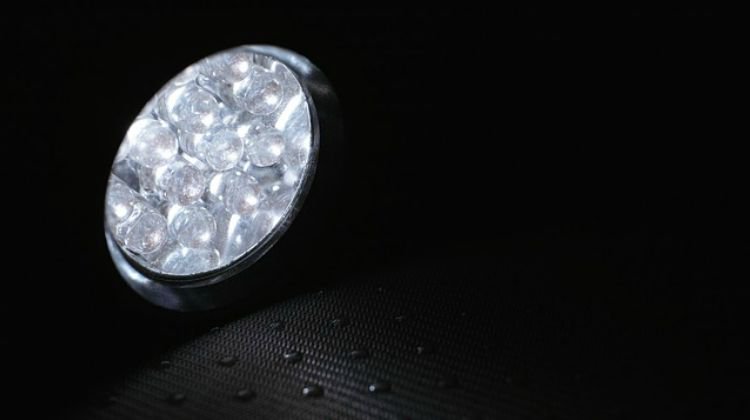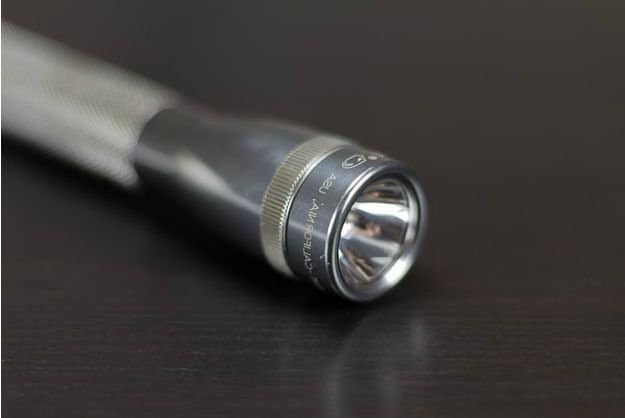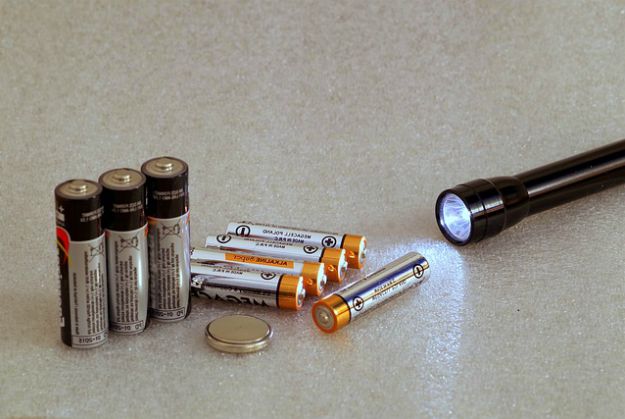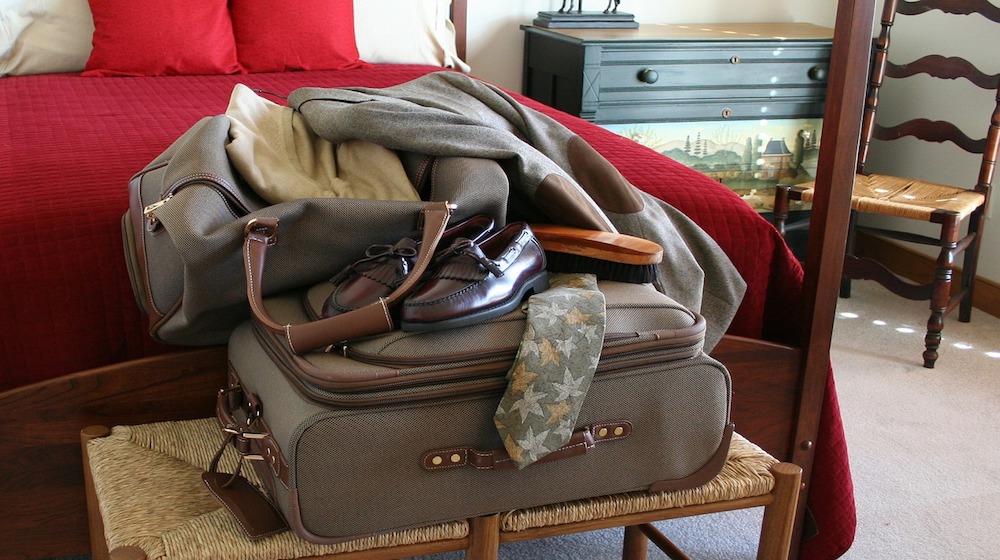Emergency Communications
Using Flashlight Power for Emergency Lighting | Survival Skills
Flashlight power is an excellent source of lighting in an emergency. Check out the article below to learn more about how this technology has evolved, and how flashlights can be a life-saving device in a survival situation.

Flashlight power is an excellent source of lighting in an emergency. Check out the article below to learn more about how this technology has evolved, and how flashlights can be a life-saving device in a survival situation.
Using Flashlight Power for Emergency Lighting
Flashlight technology has come a long way since 1899 when British inventor David Misell obtained a U.S. Patent for an “electric device” using newly-invented “D-size dry cell” batteries. When he introduced the hand held light he initiated a revolution in lighting. Since then, flashlight design has made remarkable progress. Both light bulb and battery technology improved significantly, and the trend is continuing.

How Flashlights Operate
The flashlight uses batteries that contain stored DC energy. Connecting several batteries together (in series) with a conductive metal strip, an on-off switch, and a bulb creates a flashlight. When the on-off switch or button on the flashlight is closed the circuit is complete and the bulb lights. Add more batteries and a different bulb and you can realize an even brighter flashlight. The flashlight can be left energized providing continuous light until the batteries discharge. Then the light bulb goes out and you must install new batteries to get the light back on.
Be the first to get your hands on the world’s best tactical flashlight.
A flashlight creates a beam of light that illuminates objects nearby or distant depending on the power and shape of the light beam. As the distance from the flashlight increases, the beam spreads out and the illumination gets dimmer. The beam can be broad or narrow depending on the flashlight’s design, creating a spot light or a flood light..
Light Beams in Flashlights
Consumers evaluate and compare flashlights by the lumens of light produced, the strength (reach) of the light beam, and how long the battery will last. Size and weight have consistently been reduced so today portable lights like these can weigh just ounces.
A flashlight can produce light output from less than a lumen to over 3,000 lumens. Just 20 lumens is all the light you need to read this article in a dark room. I remember when I was a boy and it was bed time. I often hid under the blankets reading comic books with a flashlight until I became too tired to stay awake. That makeshift light worked well in my small reading cave.
Flashlight Designs
Today there are hundreds of flashlight designs for sale. A visit to a local home improvement or camping supply store will show a myriad of selections.
You’ll find penlights powered by a single AA or AAA battery. You’ll find handheld flashlights sized from several inches to over a foot long with batteries that energize tiny incandescent or LED bulbs. And you’ll see keychain flashlights, general purpose household flashlights, spotlights, floodlights, tactical lights, headlamps that provide hands-free movement, and even use-once glow-sticks that give off a greenish light for up to 12 hours. And there are multimode flashlights with switchable brightness controls that make the device bright, dim, strobe, or flash an SOS in Morse code. I even found a few flashlights with a zoom capability and multiple brightness levels. The ingenuity of the human mind is endless.Flashlights come in many sizes, shapes, and prices
One type of multimode flashlight uses two double-A (AA) alkaline or nickel-metal-hydride (NiMH) rechargeable batteries and has three brightness settings—the standard setting will keep the bulb energized by alkaline batteries for just over two hours. The NiMH batteries will keep the light energized longer (about 3.5 hours). Switch to bright light and the batteries will last a little over an hour. Set the flashlight to the lowest (dim) setting and the batteries will keep the light bulb energized for over nine hours.
Incandescent vs. LED Bulbs
Most families have at least one incandescent bulb flashlight, but light-emitting diode (LED) flashlights are rapidly becoming the norm. The LED light uses less battery power, is brighter, and lasts longer than its incandescent predecessor. An incandescent bulb can produce 8-10 lumens per watt. An LED can produce 100 lumens per watt, but LEDs need more battery voltage to operate (3.4 to 3.7 volts versus 1.5 volts for incandescent). This is why keychain lights and tiny penlights still use 1.5 volt incandescent bulbs.
Incandescent flashlights using alkaline dry-cell batteries have been the standard for years while small LEDs were used mainly as low-power indicator lights. Then in 1999 a white light LED flashlight using grouped LEDs was invented, creating bright light with efficiency and run times exceeding that of incandescent flashlight bulbs. As the popularity and use of LED flashlights continues, they are replacing the incandescent as the practical flashlight of choice for main use lighting.
Flashlight Performance
For emergency lighting, you don’t need the 100 to 250 lux (929 to 2,300 lumen brightness) common to room light with full electrical power. When power is out, 35 to 100 lumens will usually suffice for brightness during normal use with 8 to 20 lumens adequate for moving about between rooms. The idea is to use natural light during the day and emergency lighting after dark—adopting a circadian schedule whereby sleeping prevails at night and most of your activity occurs during daylight.
Once you decide on the purpose you intend for the flashlight you seek, selection is made by performance. Here you want to know lumens of brightness, how far the light beam is usable, the type of battery and how long it will provide power to produce light.

In 2009, the American National Standards Institute (ANSI) published test and rating standards for all flashlights (FL1). Manufacturers were asked to print performance test results on the packaging. This is why you’ll often see FL1 standard values such as lumens, beam range, run time, and candela with signature icons printed on the front of many flashlight packages.
Flashlight Brightness
Flashlights with brightness between 1 and 20 lumens are good for key chains or small lights. A green glow-stick produces 0.6 lumens of light. A general purpose flashlight produces 30 to 100 lumens of brightness. A heavy-duty flashlight will produce 200 to 300 lumens of light. And high powered flashlights produce 1,000 up to 3,500 lumens.
The beam or throw value describes how far the light beam will shine (in meters) before the illuminance falls to 0.25 lux (the illumination of a full moon on a clear night). By mounting mirrors in a room and shining a flashlight up towards the ceiling you can reflect the light beam and increase the overall brightness effect in the area. Reflectors are included in flashlights to focus the beam and fix the beam width angle. Angles of 20 degrees or more are considered flood lights.
Run Time and Batteries

Run time describes how many hours the light can operate before the battery driving the lamp discharges to 10% of the voltage of a fresh battery. Many manufacturers make a graph showing light performance over time. These are usually available on their website or product literature.
The type of battery used in a flashlight is important in determining run time. Batteries can be disposable, rechargeable, or renewable using an external source of energy—think solar and think manual hand crank.
Battery types include alkaline and lithium disposable batteries, and lithium-ion (Li-ion), nickel cadmium (NiCd), andnickel-metal-hydride (NiMH) rechargeable batteries. Lithium batteries cost more than twice that of alkaline batteries, but lithium batteries often last many hours longer. Lithium batteries should not be interspersed with alkaline batteries—use alkaline with alkaline, lithium with lithium.
With the rechargeable batteries, nickel-cadmium batteries give you the most recycles (up to 1,500) followed by Li-ion with between 500 and 1,000 cycles. NiMH batteries are good for between 150 and 500 cycles.
Some consumers select emergency flashlights that all use the same type of battery so they have a simpler stocking issue. Others choose any type sold in stores because they want to have multiple options should the stores run low. The key is to have a good stock of back-up batteries on hand.
Emergency Flashlights
Headlamps
One popular flashlight design that proved itself during emergency power out conditions is the headlamp. It’s also called a headlight. This device channels light to a specific area. Headlamp batteries can produce 11 to 120 lumens of light and last for 150 hours or more. You need brightness reaching out about seven feet for walking at night. Lithium batteries are typically not used in headlamps. For example, the Rayovac 120 lumen headlight uses three AAA batteries.
Headlamp products produce between 11 and 120 lumens, with a reach between 9 and 40 meters, and a run time between 5 and 12 hours. They cost between $14 and $20 each. Some of these have multiple modes of operation.
Flashlight options went from 8 to 3500 lumens and reached out (beam throw) 12 to 391 meters, with operational battery lives between 1 and 50 hours on the brightest setting. Prices varied from $1.97 up to $70 with incandescent versions selling for much less than products using LEDs.
Cell Phones
Cell phones are another form of emergency light. According to comments on various forums, cell phones are available with flashlight capability in the 8, 12, 16, 25, 40, or 50 lumen range of brightness—suitable for finding a keyhole, a light switch, or to illuminate your way through the house.
EDC Lights
A category of lighting called “every day carry” (EDC) covers devices that are used working or emergency lights. The most popular EDC light manufacturers (in order of mention) are Fenix (23.8%), Streamlight (10.5%), Preon (5.6%), and Surefire (4.9%).
Survivor Top Picks
What are the most popular flashlights used by actual emergency survivors? To determine this, I read blogs and case studies covering major emergency events when electrical power was lost for over three days. I found over 60 makers and types of flashlights, head lamps, pen lights, and lanterns being used during these incidents. I also read flashlight product reviews.to see what products are most popular today.
Five manufacturers were mentioned the most:
- Fenix (13.3)
- Maglite (13%)
- Streamlight (10%)
- UltraFire (6.7%)
- Inova (3.3%)
Survivors who prepared for emergencies selected multiple forms of lighting—headlamps (one per person), small penlights or key chain lights, LED flashlights with various brightness, beam distances and run times, and 360° illumination lanterns. By judicious use of these resources, few survivors ran out of light and battery power. They used ceilings, walls, and mirrors to enhance light coverage. And they turned them on only when being used thus extending the run times out for days or weeks. A number of these survivors commented that neighbors, who failed to prepare, often found themselves stuck with flashlights that ran out of battery power causing them to frantically scrounge around to find or borrow replacement batteries. Failing to plan is planning to fail, and this adage showed up often during these emergencies.
By positioning flashlights around your home so you always have access to a device, you’ll never be left in the dark more than a few seconds when a power outage occurs at night. Here’s where knowledge is power—light power.
For awesome survival gear you can’t make at home, check out the Survival Life Store!
-

 Do It Yourself7 months ago
Do It Yourself7 months agoParacord Projects | 36 Cool Paracord Ideas For Your Paracord Survival Projects
-

 Do It Yourself9 months ago
Do It Yourself9 months agoHow To Make Paracord Survival Bracelets | DIY Survival Prepping
-

 Do It Yourself9 months ago
Do It Yourself9 months ago21 Home Remedies For Toothache Pain Relief
-

 Do It Yourself10 months ago
Do It Yourself10 months agoSurvival DIY: How To Melt Aluminum Cans For Casting
-

 Exports8 months ago
Exports8 months agoAre Switchblades Legal? Knife Laws By State









Pingback: Emergency Lighting | Flashlight Power | Survivalist Basics
Michael W. Perry
September 11, 2014 at 8:37 AM
Thanks for a great article. I’d add some additional remarks:
1. Headlights are great for work situations such as attics and basements. They shine where you look and leave both hands free. Mine is great for the attic work I am doing now.
2. I’ve got a LED flashlight that I love because it has two buttons for two different forms of lighting. One is a normal white flashlight, powerful enough to see maybe 50 feet ahead. The other is a single red LED just bright enough to navigate about a house or outdoors when your night vision is working. In fact, its primary benefit is that it doesn’t destroy your night vision or disturb others. It also gives about 40 hours of battery life with three AAA batteries.
3.When you buy, take into account how many batteries it uses and what size. Three AAA batteries might create resupply issues in a prolonged emergency. If you have only two working batteries, you are out of luck. One that uses a single AA battery is a much better choice.
4. Flashlights with an adjustable zoom seem to be becoming more common. They allow one flashlight to do double duty.
Ken
September 12, 2014 at 5:02 PM
What is the brand and model of the white/red flashlight? I am also a navigator on a sailboat and need the red light so as to not spoil my night vision.
James Macklin
September 13, 2014 at 10:29 AM
Check Sporty’s Pilot Shop, they carry several lights with naviation/pilot plane or ship utility.
http://www.sportys.com
Robert Brenner
September 16, 2014 at 11:44 AM
Here’s some info I added to my ebook, Emergency Lighting:
Red Helps us See at Night
Moving about during the night without disturbing sleeping people is a skill that’s enhanced through the use of red lighting. Years ago I served on a submarine and often had the job of bringing the ship up to periscope depth. At night this was a critical evolution since night vision would be needed to see out through the periscope. About 30 minutes before “going to periscope depth” I ordered the Chief of the Watch to “Rig the Ship for Red.” This meant that all white lighting in the entire ship would be switched to red. All panel indicators could be easily switched from white light to red light. In the fluorescent light fixtures there were two tubes—one white and the other covered in red. Switching to the red tubes would darken all the spaces on the ship—particularly in the Control Room where I stood watch as Officer of the Deck. Everyone in the Control Room needed time for our eyes to adapt to the darkness. The rods in our eyes quickly began to adjust to the dim light, but they needed 30-45 minutes of darkness to fully adapt so we could clearly see the indicators on the ship control panels and for me to see the night world topside.
By shifting to red illumination our eyes immediately began to adapt to the dim light. This meant that when at periscope depth, my eyes could quickly discern objects in the night as the scope broke out above the surface. It turns out there is a physiological adaptation that our eyes make when we are in a darkened environment. This is called “night vision.”
In the back of each eye is a “retina” containing rod and cone cells that are light sensitive (photoreceptors). These cells respond to light entering through the eye’s pupil. Rods respond to low light levels. There are about 17 rods for each cone. Cones respond to color and bright light conditions. The rods and cones send electric signals to the brain through our optic nerves. The brain interprets these as vision.
The rods can respond to the ambient light of an overcast night with no moonlight. The cones can respond to the ambient light of a night with 50% moonlight.
The key to seeing at night is a chemical in the rods called “rhodopsin.” Photons of light cause rhodopsin molecules to split into two other molecules (retinal and opsin) preventing the rods from enabling night vision in the bright lighting. When the lights are turned off, the space becomes dark. The cones are no longer useful and the rods don’t have enough rhodopsin, so we are temporarily night blind. However in the darkened environment, the retinal and opsin molecules immediately begin to merge creating rhodopsin once again. In a few minutes, night vision comes to us and we can see in the dimly lit environment.
So where does the red come in? It turns out that the color red has the least effect on night vision. By adapting to the dark and then using a flashlight with a red lens, we can see well enough to walk among objects including sleeping pets and people without waking them up. A bright light flickering through a darkened room can waken others. The cones in your eyes are more sensitive to yellow and red, but the cones barely work in dim light. The rods are more sensitive to the wavelengths of blue and green light. At night, blue-green light will look brighter than red light. So red is used to enable night vision with little impact on others and particularly on what you can see.
I found a number of flashlights that produce red light output. The Coleman LED Multi-Color Flashlight (about $30) provides up to 90 lumens and reaches out to 450 feet (137 meters) with a run time of 10 hours. It comes with a bright white mode, red night vision mode, and a blue sportsman mode. The Streamlight Night Com LED Flashlight ($50) contains both white and red LEDs. The three white LEDs can produce 105 lumens and remain energized for 3.5 hours. Switch to the two red LEDs and you get 2.5 lumens for up to 28 hours using two CR123A lithium batteries. In addition, a number of headlamps have a red light night mode, so you have options for creating red illumination at night..
You can also make a red lens for an inexpensive white-only LED flashlight using red nail polish, a red felt tip marker or red cellophane. Some flashlight manufacturers sell red filter attachments that fit on their products. Fenix sells a red filter attachment for their TK-Series flashlights for $6.
Stan
January 16, 2016 at 6:54 PM
Another option that you did not mention nor was it covered in the article is that there are now many baseball style hats (mostly hunter orange or camouflage) that have LEDs (often both white and red) built into the bills that run off of button cell batteries. Some of the hats also have a special light for illuminating blood trails in low light for hunters. I discovered these while working at Walmart a few years ago during hunting season which is when the greatest selection was available.
sara rabbins
September 12, 2014 at 9:47 AM
http://www.lights-shop.biz/
MikeB
September 12, 2014 at 10:30 AM
The new CREE LED flashlights are perfect for emergencies and camping. Some of them only need a single AA battery, make about 100-300 lumens of light, and can fit easily in any of your pockets. I shot this photo during an electrical outage with the light of 3 CREE flashlights: 1 each in the bedroom, bathroom and closet.
Hugh Sistrunk
September 12, 2014 at 10:42 AM
I modify a standard hand held spot light to increase it’s battery life from 5 to 7 days (24/7) to 28 days with a normal 6 volt Heavy Duty battery – replace that battery with an Alkaline battery and you have light 24 hours – seven days a week for up to 68 days straight.
Frank
September 12, 2014 at 10:58 AM
I’d like to share one comment and possibly a mild eye opener for those who don’t like to spend money on brands that hype their necessity, performance or usefulness.
I know that certain brands reign as the ultimate, but many choose a brand like Maglite whose products costs less, but are solidly established as quality items. And I own a few of them myself.
I wanted to buy a good compact light that had more lumens than all the small cheap AA and AAA flashlights or the keychain varieties I have. For much less than a Surefire, Streamlight, etc., I purchased an Ozark Trail for no more than $12 that provides 150 lumens for 5 hours+ and then I found a huge beast that puts out like 500 lumens. There are many that give the same lumens, but I chose these based on light output and running time. I don’t dislike the popular brands that survival mined people, police or military people buy, but with reasonable care and a lower price, I will have a few flashlights that are sturdy and powerful.
And being that I am a bit of a flashlight junkie, the variety allow me to use AA, AAA, C, D, button cell and even those old 6-Volt batteries. I prefer flexibility, but it doesn’t mean I have to buy large supplies of every battery type, it allows me to use what I can get my hands on.
Robert Brenner
September 13, 2014 at 7:52 AM
Great comments Michael. Thanks for sharing with the group. By smart energy management when using emergency lighting, these devices can easily last longer than the 3 days of power outage becoming so common in our world today. By adopting a circadian lifestyle (work during day, sleep during night) a flashlight with a run time of 40 hours can produce light for 4 hours a night and last for about 10 days.
Robert Brenner
September 13, 2014 at 7:57 AM
Thanks, Frank. Given that quality has improved greatly in flashlight manufacture, I too primarily select based on the lumens produced and the run time expected. Secondary issues include the beam length, the type of batteries, and the intended application.
Ashley B
December 11, 2014 at 10:43 PM
I myself have a Maglight that I’ve had for roughly the last 15 years or so. It uses two D cell batteries and recently I got the LED bulb upgrade and it is so much brighter than the original bulb. My Maglight ‘lives’ on top of my fridge so hubby and I always know where it is. I myself am a little bit of a flashlight junkie myself. I have a swiss army crank/solar flashlight/radio/phone charger combo, and recently I found key chain sized crank flashlights at Academy Sports, and a LED/glowstick/emergency flasher “lives” in my purse. I also love the small metal ones you can find that are 9-11 LED’s and take two AA’s or three AAA’s. They are great for keeping in my purse, the glove box, the tool box, the utility drawer, and under the counter at work after having a couple of magnets glued to them
Paul Brown
September 12, 2014 at 11:12 AM
one of the best company s
I’ve joined on there Web site is really informative, and the news letter from them is excellent I’d recommend this to all your friends.
Pete
September 12, 2014 at 12:36 PM
When I was 13 or 14, my uncle said that everyone should always have a flashlight, so, he would give me one for my birthday. I always believed in what he said, and now have various types. I think that I own around 37 or 38, I am not sure of the exact number. Three or four are small and resting in a dresser drawer, still in their packages.
I have three small ones on my house keychain, which also are handy for looking in the mailbox at night.
I keep on clipped to the aerial on a radio/cd player so I can see how much time is left on the cd.
I have a metal one in the car that I’ve had for around 50 years. Many decades ago, the batteries ate a hole about the size of a quarter in the side, but, the flashlight goes on forever. They don’t make them like that anymore. Those old metal ones were the best, and I have a couple more small ones that I have had for 60 or 65 years. I found one a couple of days ago that holds two batteries, but, was working on one.
For some time, I worked on street barricades, and found that those lights on the barricades can run on one 6-volt battery. Two are not necessary.
Pete
September 12, 2014 at 12:56 PM
Pete again.
I have lots of button batteries of many sizes. You can buy a big package of them at the dollar-type stores for a dollar and a quarter, and they last quite well. If your flashlight or remote or watch conks out, well, the battery has cost five cents or ten cents.
I have 4 or 5 chargers, even for alkaline, and have some batteries called eneloop, which can be charged. I prefer chargeable batteries, but, always keep the regular ones around for a quick fix. The popular brands that are advertised are stamped for 8 or 9 years in advance, but, you are lucky if they last 6 months, sometimes. That is why I have the alkaline re-charger.
I have several testers, too, but the handiest one is made by Pulse Load, runs on 4 AA batteries, is made in the good old US of A, has 4 eneloop ones in it, cost me about $85 a year ago or so, and I think it was on Amazon.
It tests Li-on, 1.2 v, 3 v, 12v, alkaline ( that is not the ball player from the Tigers )spelled the same–6 v, lithium, NiMH, 9 v. Get one.
desert
September 13, 2014 at 10:18 AM
I have read that it is not a good idea to recharge regular batteries…they can explode.
JJM
January 16, 2016 at 12:09 PM
CAN vs WILL?? – I recharge all types batteries. The alkaline seem to be a little more susceptible to acid leakage.
Grew up putting used batteries on top of water heater. Most of them would provide additional life.
Never had a battery explode.
bill
September 12, 2014 at 1:28 PM
I have a medium and a large maglite, but for tactical purposes and for more intense lighting purposes I use a terralux 4T, 5T and their headlamp that puts out 350 lumens.
The tactical lights are obviously just that, tactical, but there are everyday advantages to them above the likes of maglite. They are smaller, easily kept in ones pants pocket or carryall bag.
The lithium batteries are good for up to 295 hrs on low setting…much longer than traditional flashlights.
Pete
September 12, 2014 at 1:46 PM
Thanks for nothing. I went to a lot of trouble to give useful information about batteries and checkers, and neither post is up there.
R. Pickett
September 12, 2014 at 1:47 PM
Recently moved – will have a new Email address as soon as I can have the IT technician hook me up. Question is: Could you address the subject of flashlights with a dimmer switch & who manufacturs them? Thank you.
Al
September 12, 2014 at 3:20 PM
It does not how much you paid for your flashlight,if you don’t take care of them and change the batteries,your flashlight won’t help if they don’t work ,when you need them most.
Tommy Sheets
September 12, 2014 at 7:40 PM
I am thinking about an EMP. I don’t know if a LED could survive an attack. Would they need to be an a cage? Help does any body know?
Great Grey
September 15, 2014 at 12:24 AM
Yes they need protected, diodes are one of the more sensitive devices, at least to EMPs, CMEs may not be so much of a problem. As I understand it EMPs burns out the fine wire between the led and the lead to the outside of the case.
John
September 13, 2014 at 12:26 AM
For EDC, I like a 2 CR123 light. Fenix was my top choice, until mine mysteriously vanished. I could not find anyone with a sale on it, so I tried an equivalent Olight which was on sale. I found it to be brighter with a longer run time and removable magnetic base. It seems easier to use with only one button, and has a “lock” function which reduces (but does not eliminate) the light turning on in your pocket. I wonder why this company is not listed as having a mentionable part of the market?
Olight also has a 1 CR123 model which is so small it is difficult to handle, and even a 1 AA model, which is not as bright or long lasting, but would be easier to find batteries for. There is an accessory tube which allows you to use 2 AA; this does not make it any brighter, but does extend the run time.
James Macklin
September 13, 2014 at 10:26 AM
A beam of light can be a weapon, which can blind an attacker while you can identify who or what is the threat. When you get a 170 or higher power LED you have a good strong light. It is too bright to use to read a map or do other work in the dark. So having a light that can be dimmed to a low level is important.
I like the dollar value of the Maglight XL series of lights. The XL50 is 170/45 lumens while the XL100 & XL200 can dim down to about less than 10 lumens. The XL100 is more difficult to select modes because it must be in a particular position, in the dark, particularly if wearing gloves this doesn’t work well. Maglight has another light, the Mag-Tac which is 330 lumens with a momentary, ON and strobe. It is excellent for a self-defense light. It comes with a pocket clip that also fits the XL series lights and that solves the orientation issue of the XL100 too. I carry both an XL200 and a Mag-Tac for serious social uses.
M. Williams
September 13, 2014 at 10:29 AM
some years ago, I bought a small (4 1/4 inch long, 1 inch diameter) flashlight in a big box store (if we’re not supposed to “name names,” I can attest that their logo involves an orange square). I can’t remember the exact name of it, but the logo says something like “ledlenser” on the side. I bought it because, at the time, I was crawling and climbing into tiny spaces during cleanups of a huge paper making machine, and I needed a lightsource to make sure that these spaces had been completely cleaned of all the crud and funk which accumulated. it throws a better beam than the hundred dollar combat lights, and it’s been through the was at least twice.
best thirty five bucks I’ve spent in some years … takes AAAAs, which are not as common as the ‘tripleA’ type, but you can get a boatload of them for cheap, and this guy only needs new batteries every five or six months, which I think is pretty good considering it’s in use every day.
OK- that’s the rant … it’s safe to come out now…
Lee McKinney
September 13, 2014 at 10:37 AM
You should not forget your little ones when the power goes out, if they have their own light it will make them feel as if they are helping everyone feel safer. Personally I like to let the kids use one of the lights you find at the checkout in most discount department stores. If possible buy the ones that you have to hold the button down for it to work, that will allow the light to turn off when the kids fall asleep. I have found that doing this will allow you to have light for about 6 days if used only at night.
Charlie
September 13, 2014 at 7:11 PM
I was wondering if during an EMP or a solar flare, which typically wipe out electronic devices, would an LED flashlight be rendered useless since it is technically an electronic device (the LED part). I have a number of LED types around the house and really like them, but I also keep a couple of the older type incandescent ones also, as I don’t remember anyone discussing this matter. An educated comment would be appreciated.
Wayne Lawrence
September 15, 2014 at 3:48 PM
This is the first time I have seen this material. I am like most of the people who read this article – I have many flashlights.
I was born and raised in New Orleans, Louisiana and, because of hurricanes in that area; I try to be prepared for another Hurricane Katrina.
I don’t really care about what lumens it puts out or how big the bean is. I really care about: “is it working?” It doesn’t matter what size battery is used in the flashlight. They ARE going to die out before you can recharge them especially if you need house electricity to recharge the battery.
I look for flashlights that can be recharged from other sources, such as: car charger, a dynamo, and solar.
I recently found a great lantern that can be charged by house electricity, car battery, and solar charged at Harbor Freight Tools. The light output is provided by twelve (12) white LEDs for a brighter light than most gas mantle lanterns. The run time is eight (8) hours on a full charge. I know the light can be charged no matter what happens. In fact, I like the lantern so much I am going to get more of them as soon as I can.
Michael
September 16, 2014 at 1:01 PM
I started out with tactical lights several years ago purchasing the SureFire products. Over time, as more manufacturers entered this lucrative market, pricing and product quality became more competitive (except for the SureFire products) which prompted me to try other vendors. I have been extremely pleased with the Streamlight line of lights. I am firmly committed to a saying we have in the Marines, “Two is one, and one is none” when considering equipment and backups. As a result, I carry several Streamlight ProTac 1 AA’s in my main pack, my assault pack and my hydration carrier. These are great little single AA lights good for routine lighting at night. I also have a few of the Streamlight ProTac 2AA which provide more lumens and give you the capability of “reaching out” a bit further into the darkness. The Marine Corps went to the Streamlight Sidewinder to replace the older model flashlight the Corps had used forever. I carry one of these on my plate carrier and in my assault pack, along with the compact version for a headlamp. These two sidewinders have the advantage of being able to use a AA or a 123A (3 volt) power source. I also use a Streamlight TLR-1 HK weapons light on my personal AR15 (civilian model), my Remington 870 (MagPul model), and my Glocks. These weapons lights provide a little over 600 lumens and really light up a target area. The nice thing about these Streamlights products is the price, the durability, and the battery life you get when using them. I only use SureFire products if my wealthy “Uncle” is paying!
Pingback: Survival Life: Emergency Lighting – Flashlight Power | The Survivalist News
Pingback: Ready Your Home for a Power Outage | Survival Life | Blog - Survival Life | Preppers | Survival Gear | Blog
Pingback: Bring Dead Ni-cad Batteries Back to Life - Survival Life | Blog - Survival Life | Preppers | Survival Gear | Blog
Gary
December 8, 2014 at 6:05 AM
I recently found a conversion kit for 2D cell flashlights. It converts to 2AA cells and comes complete with a drop in LED bulb. I also discovered it may not work on some lights because of the bulb retainer has a raised area to hold the battery in place. I shaved mine down just enough to correct this. It only has worked in two of my old 2D cell lights and that is because of the design of the individual light.
The two that I did convert work great. The company has no plans to make a kit for larger lights or for C cells.
Pingback: Skills: 5 Tips For Restoring Dead Batteries – Urban Survival Times
Pingback: Preparing Your I.N.C.H. Bag | Survival Life
Pingback: Product Review: Olight Baton Flashlight Series | Survival Life
Pingback: Backup Power Supply: How Long Will That Backup Last?
Pingback: Sustainable Electric Power | Survival Life
Pingback: How to Bring Dead Ni-Cad Batteries Back to Life | Survival Life
Pingback: flashlight when is the new coming out – www.korrespondenzadresse.info
Pingback: Power Outage Tips | Survival Life
Pingback: How to Revive Sealed Lead Acid Batteries
Pingback: How to Revive Sealed Lead Acid Batteries - Survive!
Pingback: Bring Dead Ni-Cad Batteries Back to Life | Prepper Skills - Survive!
Pingback: Bring Dead Ni-Cad Batteries Back to Life | survivalisthandbook.com
Pingback: Shedding A Little Light On Cheap Solar Power - Survive!
Pingback: Important Trades for Survival - Survive!
Pingback: Shedding A Little Light On Cheap Solar Power | Survival Life
Pingback: Shedding A Little Light On Cheap Solar Power – Ultimate Survival Alerts
Pingback: 8 Great Ways to Generate Electricity When SHTF | Survival Life
Pingback: Trade Skills That Will Help You Right After SHTF | Survival Life
Pingback: Important Trades For Survival – Ultimate Survival Alerts
Pingback: 10 Alternative Energy Sources You Can Use Today – Bulletproof Survivors
Pingback: 5 Top Flashlights for Law Enforcement: Gear for Safety! | Free Patriot Gear